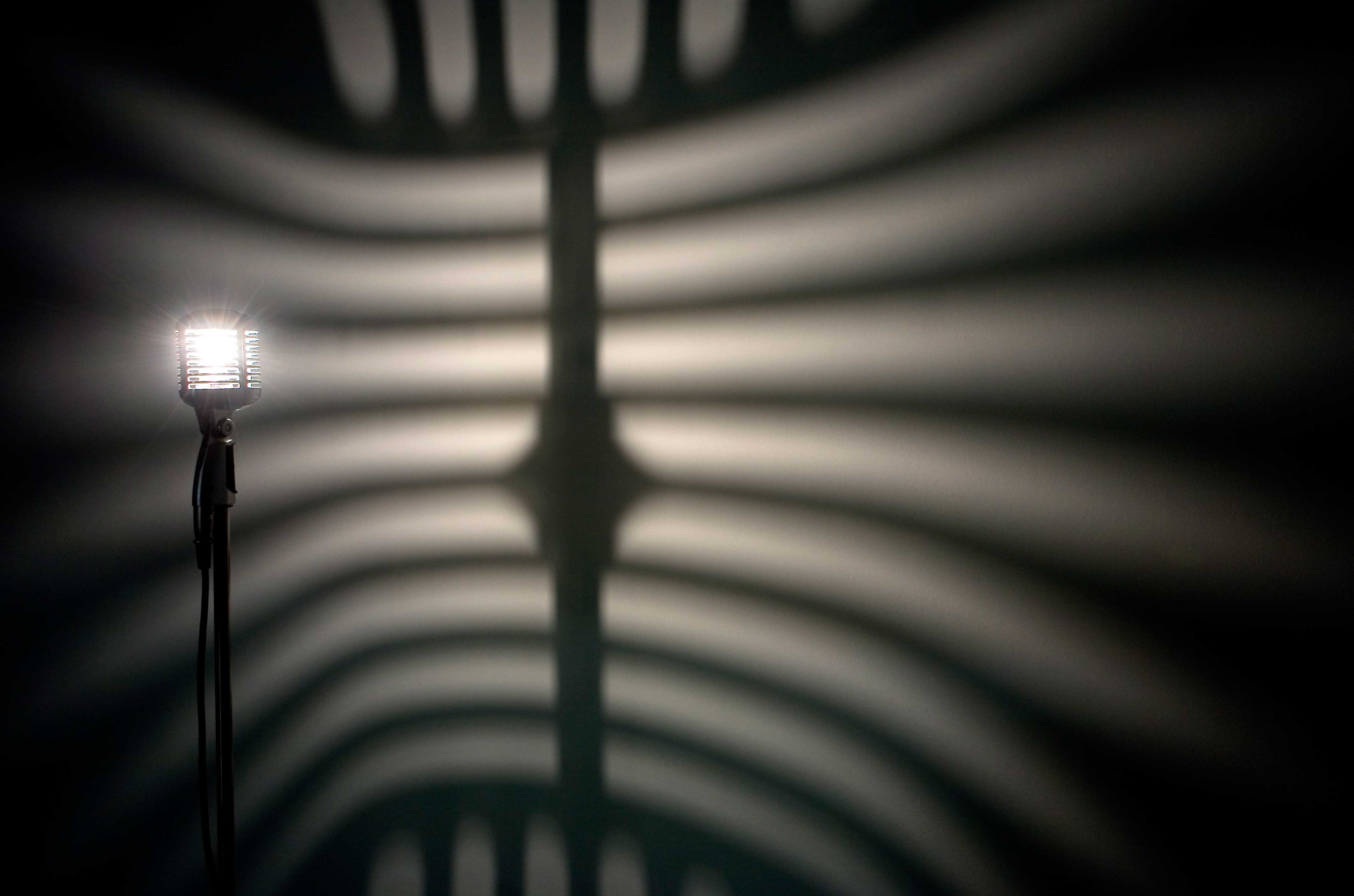Shows
“Soundings: a Contemporary Score "


“Soundings: A Contemporary Score,” on view at the Museum of Modern Art (MoMA) in New York, opens with American artist, Tristan Perich’s Microtonal Wall (2011) which, installed along the corridor, emits loud white noise through 1,500 simple one-bit speakers. Displayed in a grid, the speakers serve to “cleanse” the aural palette as if in anticipation of what is to come.
This exhibition offers a unique perspective into contemporary artistic practices engaging with sound. Works on view consider the role and presence of sound through visual, spatial and conceptual means.

Drawn in by the tonal wall, a work by Camille Norment next confronts the visitor. Triplight (2008) is a vintage microphone reminiscent of the model wielded by icons such as Louis Armstrong and Billie Holiday. A flickering light installed inside the microphone’s head casts a shadow that resembles a rib cage on the wall behind it. This work, along with several others in the show, speaks about sound through its absence.

Continuing onwards, the viewer is led through a maze of dark rooms filled with videos, projections and speakers, broken up at intervals by brightly-lit corridors lined with framed drawings. In Scottish filmmaker Luke Fowler and Japanese artist Toshiya Tsunoda’s Ridges on the Horizontal Plane (2011), a piece of white fabric has a moving image projected onto it. Fans stationed in opposing corners cause the fabric and image to ripple and wave. Taut piano strings placed just two inches from the sides of the fabric are occasionally grazed, creating faint sounds barely audible though the shuffling of the projector and spinning fans. The exhibition text hints at something to do with sounds and the moving image coalescing into one. The disparate elements, however, seem only loosely tied together.

Taiwanese artist Hong-Kai Wang's video, Music While We Work (2011), a multi-channel sound and two-channel video installation, is of a more political bent. Wang focuses on the authority of sound and how it dictates our daily life, at times imperceptibly. A group of retired workers from a sugar refinery are depicted holding recording devices emanating the sounds of the factory where they once worked. Divorced from its origins, the power of sound is emphasized. The workers look small and awkward in relation to the overwhelming noise that still engulfs them, The repetitive motions of manual labor look subdued compared to the sound of roaring machinery which seems to takes on a life of its own, and threatens to obliterate.
The multiple ways that viewers have been asked to engage with the works in “Soundings” highlights how the sweeping label of “sound art” can fail to encompass the diverse range of experiences such work can inspire. Perich, Norment, Fowler and Tsunoda vary greatly in their respective approaches and for this reason it is difficult at times to understand whether the works benefit from being considered under this label or are merely reduced.

One body of work, however, provides a refreshing and concentrated experience of sound. Deaf since birth, Korean-American artist Christine Sun Kim’s drawings, seemingly childlike in their execution, display a lyrical quality that is more effective in conveying sound than many of the works comprising audible components. In Pianoiss…issmo (Worse Finish) (2012), Kim created a hand-drawn chart out of the musical symbol “piano”—meaning soft—multiplied exponentially. This work entreats the viewer to imagine what a quietness more than silence might sound like. In the absence of sound, silence becomes palpable and even loud. Kim’s drawings of feedback—the ringing reverberations and bodily sensations of sustained silence caused by the last sound heard—accurately depict this state.
Like Kim’s drawings, the most successful works in “Soundings” are those in which sound is not limited to the audible, but rather demonstrative of its subjective nature. Sound encompasses all that is in our heads as we read a book, mouth a word and in all of our bodily gestures. In addition, there is a difference between sound and noise: unlike noise, sound aspires towards meaning and communication.
Soundings: A Contemporary Score is on view at the Museum of Modern Art through November 3, 2013.







